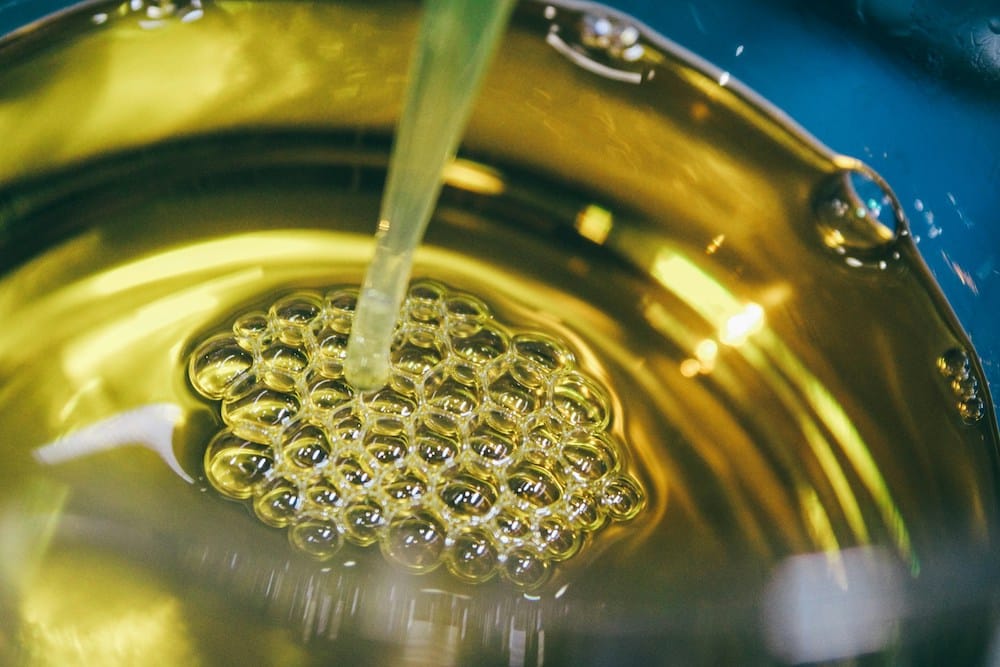If you’ve missed the news for the past few years, partially hydrogenated fats are dead, and with them trans fats. Long live healthy fats!
But not so fast, unfortunately. The truth is a bit more complicated, as the departure of one common processed fat only makes way for another, and understanding trans fats and healthy alternatives is more important than ever.
It should be no news that trans fats are an unhealthy choice, one that has been used in the food industry for decades.
In recent years, the regulations surrounding hydrogenated fats have changed. But what hasn’t changed is the processed food industry’s need for a cheap and solid shortening for baked goods and other shelf-stable foods.
This has opened up space for new processed fats that can be labeled as having no trans fat, but still have all the benefits of hydrogenated oils. A deeper dive is definitely necessary to understand the changes and what we can expect to see more of on our grocery store shelves.
Improve speed with partially hydrogenated oils and trans fats
Partial hydrogenation was first introduced in the early 1900s as a way to produce shelf-stable cooking fats that were solid at room temperature. In fact, it won the Frenchman Paul Sabatier the Nobel Prize in Chemistry in 1912.
Prior to this, animal fats such as butter and lard were used for pastries because they created the desired flaking. But they were not very shelf stable and were thought to be unhealthy. They were also more expensive than seed oils.
As the desire to reduce saturated fat increased, partially hydrogenated oils (PHO) were used for frying and for margarine as a substitute for butter.
At the time, it was not understood how unhealthy the trans fats contained in these oils were for you. As this has become more widely known, the demand for regulation of trans fats has increased.
The type of fat is determined by the type of bond between carbon and hydrogen atoms in a molecule.
Saturated fats have only single bonds between hydrogen and carbon. Monounsaturated fats have one double bond and polyunsaturated fats have at least two double bonds.
A naturally unsaturated fat will have a double bond with the hydrogens on the same side of the molecule. But a trans fat has a double bond with hydrogen atoms on opposite sides of each other.
This happens through a process where hydrogen is added to a saturated fat. But trans fats also occur naturally in very small amounts in some meats and dairy.
Beginning in 2006, the FDA began requiring all packaged foods to include trans fat amounts on food labels.
The health risks of trans fats
These trans fatty acids have been found to increase LDL cholesterol and triglyceride levels, decrease HDL levels, and promotes inflammation, emphasizing the need to explore trans fats and healthy alternatives in our diet.
It is with this in mind that the FDA removed partially hydrogenated oils.” Generally Recognized as Safe (GRAS) definition in 2015. It gave manufacturers until 2018 to stop producing food with PHO. And by the end of 2020, the food should have been off the shelves.
As we explore the history and impact of PHOs, it is helpful to think about trans fats and healthy alternatives for better food choices.
Palm oil as an alternative to partially hydrogenated oils
This huge change in the food industry meant that manufacturers had to find substitutes. And they weren’t going to go back to lard.
There have been many options that have appeared on store shelves.
Palm oil has made a resurgence after many years of weakness. Unfortunately, most palm oil is highly processed. There are unrefined palm oils, but some people are put off by their smell and taste. (This is different from palm kernel oil, which is extracted from the seeds of the palm tree.)
In addition, palm production has led to massive deforestation, mainly in Indonesia and Malaysia. If you want to use palm oil but don’t want to increase the impact on Southeast Asian rainforests, you can look for Roundtable on Sustainable Palm Oils (RSPO) certification..
You’ll typically pay quite a bit more for palm oil and foods that contain higher quality, rainforest-safe palm oil.

Are Interesterified Fats the Future?
One of the newest alternatives to PHOs is one that has the processed food industry practically reeling. That’s because it’s cheap, shelf-stable, and doesn’t need to be labeled.
Transesterified (IE) fats use one of two processes, either chemical or enzymatic. The chemical process has been around since the 1940s and is cheaper due to the cost of the enzymes used in the other option. But chemical esterification is less controlled and produces less overall product.
Potential health effects of IE fats
Although the assumption was that changing the structure of the fat would not affect health, the limited research that has been done and shared on IE fats suggests otherwise.
Studies point to the process negatively affect fat metabolism, blood sugar balance, immune function and liver health.
The biggest problem is the lack of research. While many studies have been done on IE fats, human trials have been quite limited. Functionality and chemical composition have been considered, but not health impact.
The good news from the research that has been done is that IE fats may not raise LDL levels like trans fats. They too may slightly decrease D-dimer concentrationswhich may be a sign of an increased risk of blood clots.
The bad news is that some studies point out IE fats that increase total LDL to HDL ratio and fasting glucose levels similar to the results found from trans fats.
And while it’s clear more research is needed on trans fats, in the meantime, you may not know if you’re consuming them. That’s why they are not required to be marked as such.
Currently, IE fats may be referred to as “fully hydrogenated” or “structured fats.” They may also list the type of oil (such as palm oil or vegetable oil), but do not mention that they have been modified.
Until more research is done, it’s important to stay informed about trans fats and healthy alternatives so you can make better health choices.
We need more research, we need more options
It is clear from the lack of research, especially in humans, that we need more information about current alternatives to PHOs, so anyone interested in nutrition should pay attention to trans fats and healthy alternatives.
While animal-based options have existed for thousands of years, there are issues of cost, stability and choice for those who avoid animal products.
And while overly processed foods aren’t the healthiest choices, consumers deserve to know what’s in their food and how it can affect their health.
Whether you’re looking to get into nutrition education without the full commitment of a certification, or you’ve finished school and want a little refresher, check out the Nutrition Therapy Institute’s enrichment courses.
The ABC Program (AnyBody Classes) offers courses that are one-time and completely online, giving you the freedom to take the course when you want. Sign up now!
About the author: Maya Strausberg earned her Master Nutrition Therapist certification from NTI before starting her private nutrition therapy practice. She now offers writing and editing services to nutritionists and other health professionals around the world through her business, Family Tree Nutrition.
Pictures:
- Photo by HamZa NUASRIA on Unscrew
- Photo by Rogerio Lau on Unscrew
- Photo by Phewlargevia Ciccolo on Unscrew
